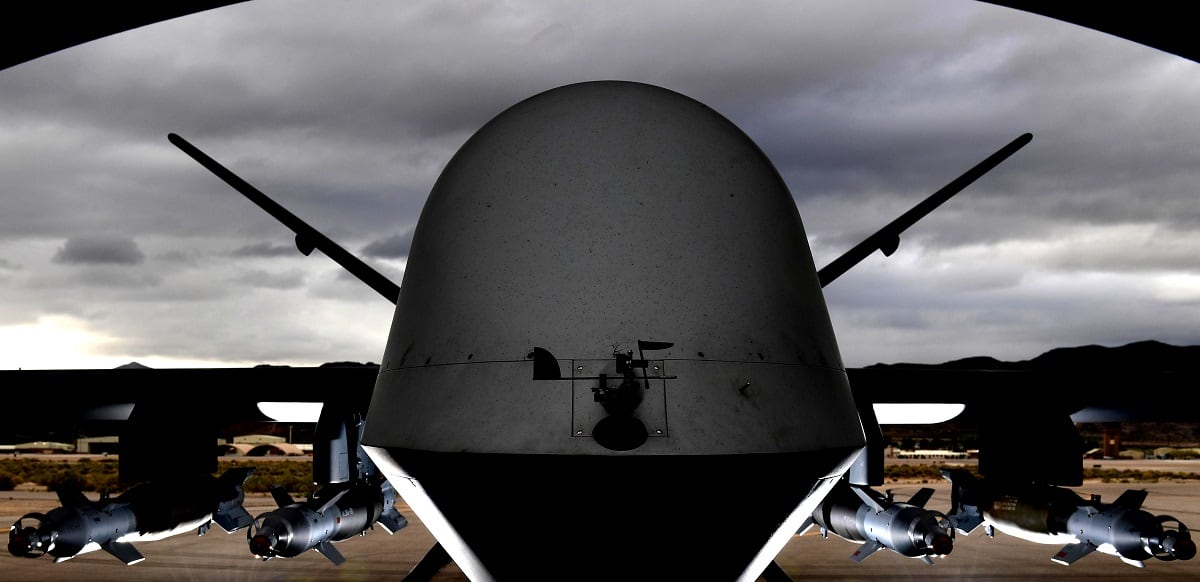WASHINGTON — The U.S. airstrike that on Thursday killed Iranian Gen. Qassem Soleimani, the head of the Islamic Revolutionary Guard Corps’ Quds Force, may portend a reinvestment from the Pentagon in the Gulf region.
Less than a day after the strike, which also killed several other top officials from Iranian-backed militant groups in Iraq, the Pentagon announced it will send 3,500 more troops to Kuwait. That addition means the U.S. has increased its force posture in the region by roughly 20,000 since May of this year, an increase which also includes high-end missile defense assets and fighter jets.
With analysts predicting the Iran situation will remain an issue for some time, it’s fair to wonder what the impact may be on the Pentagon’s execution of the National Defense Strategy, a document that calls for the U.S. to find ways to limit itself in the Middle East.
The NDS, which top Defense Department officials have championed as a guiding light for the future of America’s military, seeks instead the movement of funds and materiel to challenge Russia and China.
The assassination of Soleimani came just weeks after U.S. Defense Secretary Mark Esper announced he was weighing the redeployment of troops around the globe, an effort to realign forces to match the NDS. A subsequent New York Times article reported that Esper was planning for troops to withdraw from Africa, South America, Iraq and Afghanistan.
Dan Goure, an analyst with the Arlington-based think tank The Lexington Institute, said it is “ironic that within two weeks of that announcement ... we are now sending approaching 4,000 troops back into the Middle East."
"This goes to the point that the world rarely goes along with our plans. And the military needs to think about that seriously,” he added.
Bryan Clark, a retired U.S. Navy submarine officer and analyst with the Center for Strategic and Budgetary Assessments, said the airstrike in Baghdad was misaligned with the National Defense Strategy.
“It doesn’t seem consistent with the NDS,” Clark said. “The administration is putting a lot of effort into pressuring Iran, and that seems like that’s the place where we should be letting things go. They are putting a lot of effort into preventing Iran from achieving its foreign policy goals in the Middle East, and it almost seems like they are doing it in support of Saudi Arabia’s effort to become the regional hegemon, more than it is to support some independent interest of our own.
“When it comes to regional powers, basically the NDS says the U.S. is going to do what it needs to do to keep them in check, through mostly economic, diplomatic and maybe some deterrence-type pressure. But it didn’t suggest at all that we were going to take offensive action against those countries in an effort to contain them.”
A budget redirect?
A former Pentagon official familiar with the thinking behind the strategy said that flexibility for surging forces where needed is built into the document, asserting that the current flow of forces does not reflect a major break from the NDS. But, the former official added, the key question now is whether the Iran situation “bends or breaks” the overall strategy.
“By ‘bend,’ we’re talking about extending timelines, and margins for error being reduced beyond the comfort bounds the department had, but the objectives remain achievable. ‘Break’ means the objectives of the NDS themselves are unachievable within the seven-year time frame laid out in the strategy,” the former official said.
A break, fundamentally, could also come with changes to planned investments in high-end technologies needed to counter great powers, particularly China. A small increase in operations, largely based around precision-guided weapons launched from drones or a short increase in troops, should come from operations and maintenance accounts, not future investments, and hence should be survivable, the former official said. Something larger may require drawing on money that had been earmarked for systems such as hypersonic or directed-energy weapons.

The problem, the former official said, is that the department lacks metrics to predict where that break point may come from. “Is 5,000 forces to the Middle East for six months enough to cause a bend? Does it break at 10,000? No one really knows,” the former official said.
Even if the conflict with Iran escalates, the Defense Department cannot allow itself to be distracted from meeting the objectives of the National Defense Strategy, said Heather Penney, a former F-16 pilot who served in Iraq and currently works as a senior resident fellow for the Mitchell Institute for Aerospace Studies.
“This is an area that requires discipline and focus and commitment from all of our national leaders,” she said. “The National Defense Strategy, in my mind, really does identify properly the long-term strategic and existential struggle with those competitors, with China and with Russia.
“If we become drawn into something more hot in the Middle East, we need to maintain the discipline to be able to simultaneously remain committed to preparing [for] and competing on that great power stage.”
Rebecca Grant, a defense analyst with IRIS Independent Research, expects U.S. military activities will remain targeted and small-scale, such as coordinated airstrikes against specific operatives. She also expressed optimism that budget plans will survive whatever may come.
“I think the U.S., allies and hopefully even Iran themselves don’t want a wider war. We’re not talking about an invasion of Iran. We’re talking about stopping Iran in places we have watched them for years,” she said.
The U.S. military has the necessary force structure and equipment needed to suppress Iranian activities in Iraq through means such as the MQ-9 Reaper attack that killed Soleimani on Thursday, Grant said. "Does escalation with Iran invalidate the NDS? Heck no, because Russia and China’s threats of technology pacing remain absolutely real,” she said. “The NDS remains very much on track. It just means we need the investment to counter the rising threats from Russia and China.”
One budget area to watch: whether the fiscal 2021 budget comes along with a boost in overseas contingency operations funding, or OCO, which is money used to pay for wartime operations in theater.
The OCO account “was likely on a lower trajectory over the next several years. We doubt that’s the case now,” analyst Roman Schweizer of the Cowen Group wrote in a note to investors. “The U.S. will likely increase deployments of forces to the region in coming weeks and could make additional strikes depending on Iran’s response.”
Byron Callan of Capital Alpha Partners adds that an escalation in the region could lead to strong spending in the missile and munitions business, writing to investors that “a conflict will see wide-spread use of conventional precision guided weapons and surface-to-air missile interceptors. Aerojet Rocketdyne, Lockheed Martin, and Raytheon may have larger exposure to these weapons segments than other defense peers.”
“U.S weapons production is already at, or approaching capacity, so an issue is how ensuing conflict(s) use existing inventories and whether there are decisions to expand capacity to replenish weapons that are consumed,” Callan added.
Aaron Mehta was deputy editor and senior Pentagon correspondent for Defense News, covering policy, strategy and acquisition at the highest levels of the Defense Department and its international partners.
Valerie Insinna is Defense News' air warfare reporter. She previously worked the Navy/congressional beats for Defense Daily, which followed almost three years as a staff writer for National Defense Magazine. Prior to that, she worked as an editorial assistant for the Tokyo Shimbun’s Washington bureau.
David B. Larter was the naval warfare reporter for Defense News.




